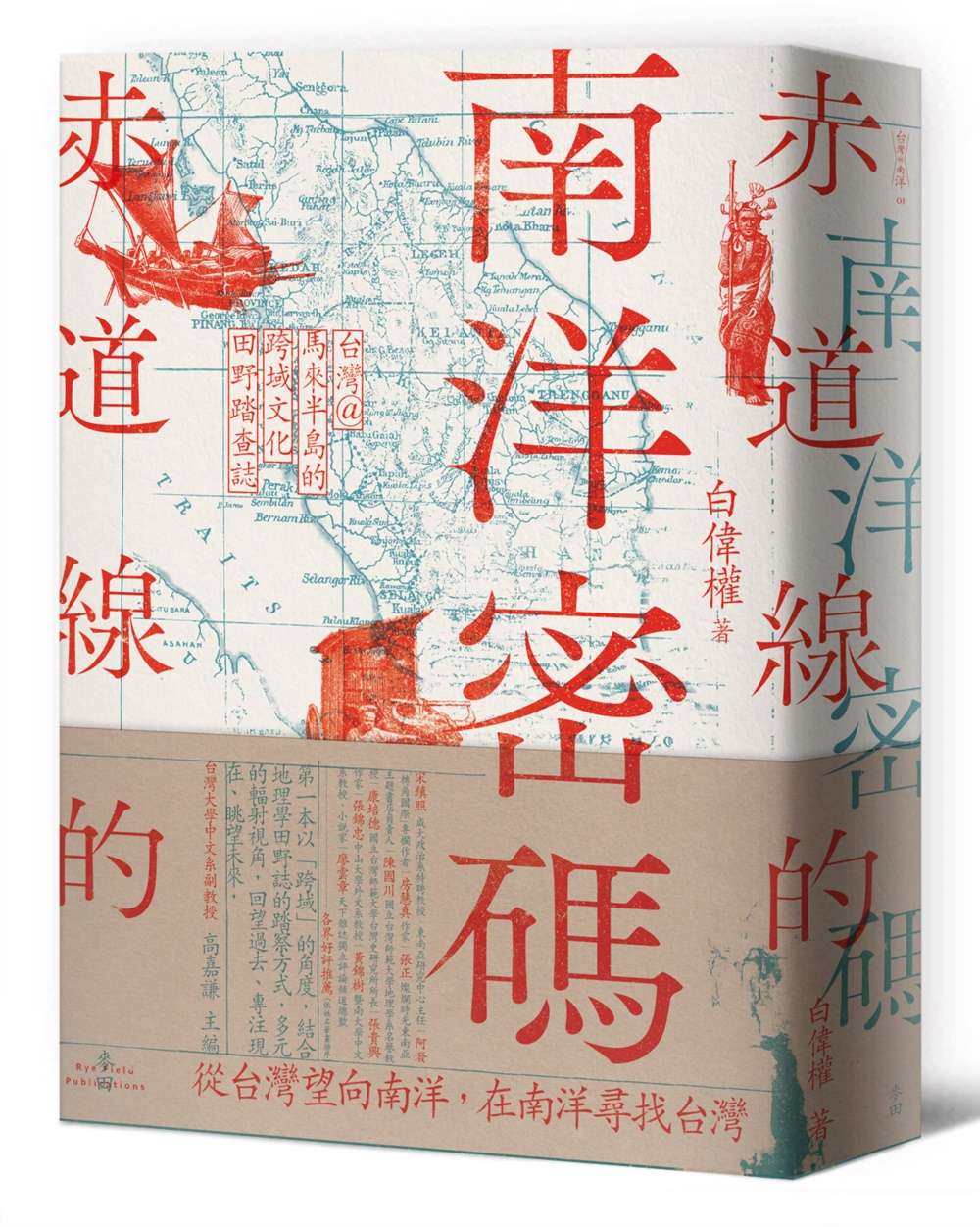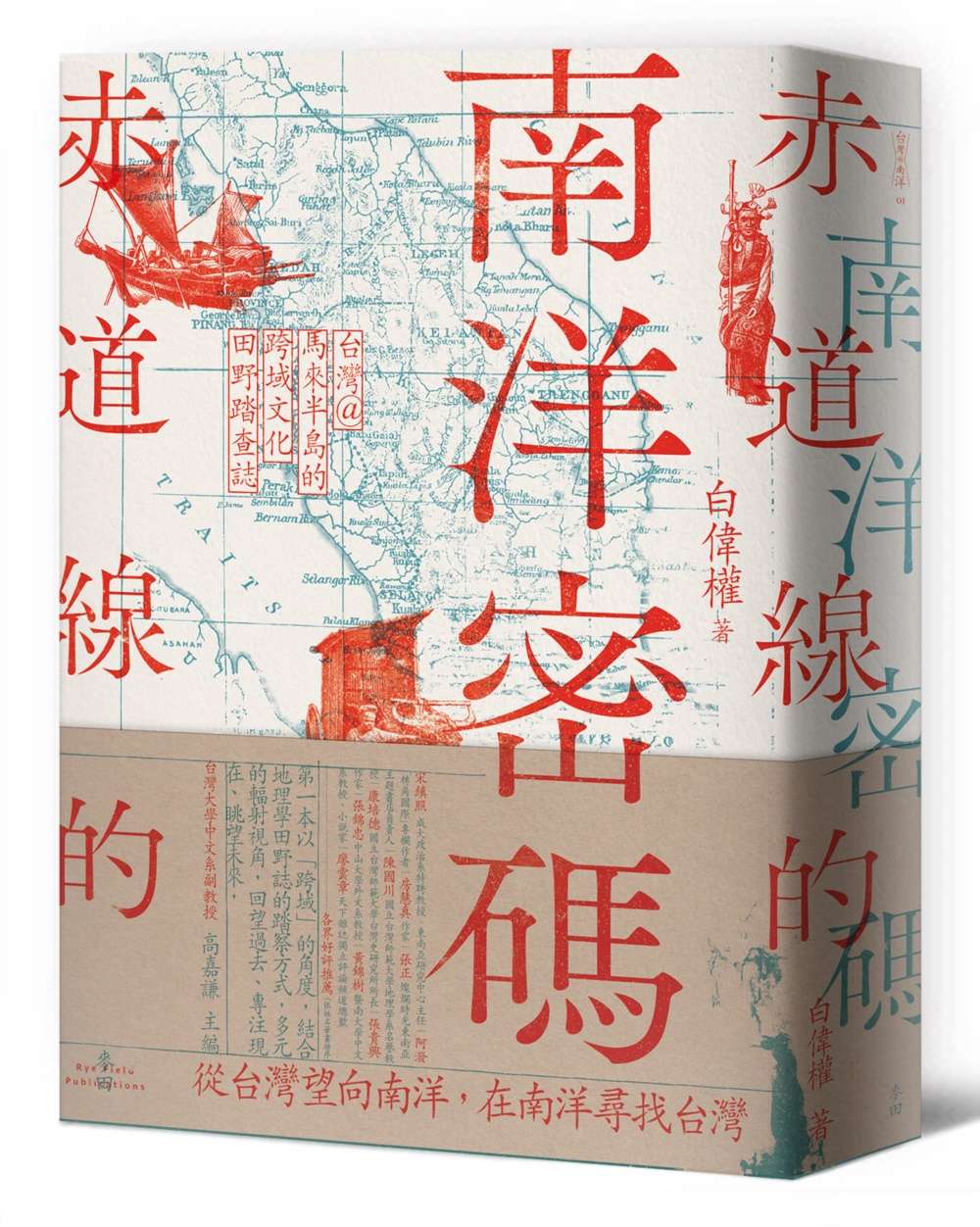The South Seas Code of the Equator: A Cross-Domain Cultural Fieldwork in Taiwan and the Malay Peninsula
The South Seas Code of the Equator: A Cross-Domain Cultural Fieldwork in Taiwan and the Malay Peninsula
In stock
Couldn't load pickup availability
ISBN/EAN: 9786263101715
出版日期: 2022-04-30
页数: 448页
语言: Traditional Chinese
The first one is from the perspective of "cross-domain".
Combining the exploration method of geographical field records,
Connecting cultural landscapes, multiple radiating perspectives,
Look back at the past, focus on the present, and look forward to the future.
A profound history of the relationship between the Malay Peninsula, Taiwan, and Chinese people around the world
▲
“Who are the original inhabitants of Malaysia? Who are the outsiders?”
What is the inseparable connection between Taiwan and the Malay Peninsula?
Drawing on field research and supplemented with specialized knowledge, the author recounts the stories of historical figures, connecting the intertwined landscapes of trade, politics, production, culture, and local customs, untangling a clear historical and geographical context, offering both a macro perspective and nuanced detail. The author's intellectual guidance, like a storyteller, frames the reader's narrative within a larger historical perspective, ensuring both interest and a critical understanding. The author attempts to remind us that the characters and events within the text, and the local perspectives behind them, all have essential connections. This is an attempt to expand from a single point to a larger picture, introducing the intellectual thread that connects Taiwan to Southeast Asia, and attempting to convey the necessity of understanding Southeast Asia through Taiwan, and imagining Taiwan through Southeast Asia.
"The Equator's Nanyang Code" emphasizes geographical "discovery," thus offering a perspective worth pondering: how can the relationship between individuals and places be viewed within the larger framework of history? The influence and impact of these cross-regional local elites, and the networks of connections and interactions behind them, touch upon a historical context that transcends a single local context. In other words, the trivial, fragmentary details and clues of history often reconstruct a historical perspective in a geographical sense.
— Gao Jiaqian (Editor-in-Chief, Associate Professor of the Department of Chinese Language and Literature at National Taiwan University)
Song Zhenzhao | Apo, Distinguished Professor of Political Science and Director of the Center for Southeast Asian Studies at National Cheng Kung University | Fang Huizhen, International Columnist at Zhuanjiao | Writer Zhang Zheng | Chen Guochuan, Director of the Brilliant Times Southeast Asia Bookstore | Kang Peide, Professor Emeritus of the Department of Geography at National Taiwan Normal University | Zhang Guixing, Director of the Institute of Taiwan History at National Taiwan Normal University | Zhang Jinzhong, Writer | Huang Jinshu, Professor of Foreign Languages and Literature at National Sun Yat-sen University | Liao Yunzhang, Professor of Chinese Language and Literature at Jinan University and Novelist | Director of CommonWealth Magazine's Independent Commentary Channel
——Recommended by various circles (sorted by the number of strokes in the name)
▲ A cross-domain perspective, a comprehensive view of multiple aspects:
Combining Southeast Asian countries and looking at the whole world, it discusses broad and narrow ethnic groups, culture, economy, geography and other fields, and is written from a Taiwanese perspective, making it easier for readers to enter the field research site in Malaysia.
▲The pictures and text complement each other, and the documentation is solid:
With its storytelling and well-documented content, matched with exquisite illustrations, it leads readers into the great historical torrent of the Malay Peninsula and unearths the geography of Nanyang that you and I have never known.
▲Geopolitics, past and future:
Do Taiwanese truly understand the Malay Peninsula, so close yet so far away? We'll explore the two-way connections between Malaysia and Taiwan, beginning with the source and extending them to the world.
The history of the Malay Peninsula has always been a story of monsoons, trade, and migration. Immigrants, sailors, and traders from diverse civilizations, including East Asia, South Asia, and Europe, often arrived in this tropical land to stay and trade due to the monsoons. This land is rich in resources, and those who come here can find a variety of agricultural, mining, and forest resources. —Bai Weiquan
▲▲▲▲▲▲
Malaysia, a maritime fortress, enjoys an excellent strategic location, sandwiched between the South China Sea and the Strait of Malacca. It is a country with a diverse ethnic group, culture and language, and the blending of these elements has created a rich and exciting historical connotation.
The book covers topics such as colonial politics, immigration and political and economic situations, industrial changes and historical events. It is divided into three parts, starting with history, people, families and landscapes.
"The Genetic Map of History" offers a panoramic view of the Malay Peninsula and Singapore. Beginning with a discussion of ethnic economic activities, using the framework of the "agricultural south, mining north" economies of gambier, pepper, rubber, and tin as a framework, it interprets the social fabric of the peninsula's diverse ethnic groups.
"Cross-domain Social Elites" selects important figures who created the modern history of Malaysia, Singapore and Indonesia since the 19th century as the protagonists, including Bi Qilin, Kang Youwei, the Banqiao Lin family, the Medan Hakka Zhang brothers, Zheng Jinggui, Lu You and others, to explore the cross-domain and transnational experiences of the social elites at that time, and see how these people traveled thousands of miles from Taiwan, China or the West to the Malay Peninsula, and what impact they had on the local political and economic environment.
"Horizontal Cross-Border History" explores events familiar or reminiscent to Taiwanese, but which took place on the Malay Peninsula. For example, the Tiandihui (Heaven and Earth Society) existed in Taiwan, but also in Malaysia; the Sanwu Company developed farms in Taiwan, but invested in rubber plantations in Malaya; and Sun Yat-sen, the founding father of the Republic of China, and his revolutionary companions can also be found in Singapore and Malaysia. This section focuses on interpersonal interactions, exploring the historical realities or unique historical outcomes they shaped.
The book uses detailed field surveys to explore human networks and phenomena across "ethnic groups, countries, and regions." This is the most unique perspective in writing about issues related to the Malay Peninsula.
Bai Weiquan
Born in Singapore, of Malaysian descent, he holds a PhD in Geography from National Taiwan Normal University. During his time in Taiwan, he served as Secretary of the Chinese Geographical Society, Editorial Member of the Academic Terminology Translation Committee of the National Institute of Educational Research, Adjunct Assistant Professor at Soochow University, and Postdoctoral Research Fellow at the Hakka College of National Central University. He is currently Assistant Professor in the Department of Chinese Language and Literature and the Department of Southeast Asian Studies at New Era University College, Malaysia, Advisor on Geography for the Malaysian Dong Jiao Presidential Curriculum Committee, and a columnist for Malaysiakini. His research interests include Malaysian regional geography, historical geography, Chinese studies, and toponymy. He is the author of "Transformation and Integration of Chinese Society in Johor Bahru: 1855-1942" (2015) and Editor-in-Chief of the "Annual Report of the Johor Bahru Chinese History Museum" (2018-2021).
[Taiwan@Nanyang] Book Series/Gao Jiaqian
Editor's Preface: Big History and Small Stories on the Equator / Gao Jiaqian
Introduction: The Malay Peninsula in Historical Time and Space
1. Historical Genetic Map <br />Gambier, Gangjiao, and the Century-long History of Johor-Singapore Relations; Searching for the Lost Plantations of the Old Nalut Mining Area; Indians and the Cattle Signs on the North-South Expressway; Stories of Ancient Cannons in the Grand History; The Blending of Chinese and Western Faith in Dato's Beliefs
II. Cross-domain social elites <br />Bi Qilin: From Taiwanese intern to Nanyang tycoon Tanjung Tuan: The "Isolated Island" in Southeast Asian Oceans and Late Qing Dynasty history
Medan-Penang-Banqiao: The Sumatran Hakka Zhang Brothers in Penang; Haishan and the HKU Department Head: Lai Jixi's Connection to Malaya; HKU's Loke Yew Statue: Exploring the Historical Connections Between Hong Kong and Malaya; The Nanyang Tiger in "Nanjie Yinren"—Wing On Hall
3. History of horizontal cross-border cooperation <br />Meeting the Tiandihui in Johor Bahru and its leaders’ patriarchs in the sea kingdom: the Japanese-owned company of the Xinjiang Qiu clan during the Age of Discovery, the Taiwan Governor’s Office and the disappeared Japanese-owned rubber plantation in Johor; the Malayan overseas Chinese who co-founded the Republic of China with the founding father; and the Malaysian Chinese education before the Republic of China in Taiwan.
Share


